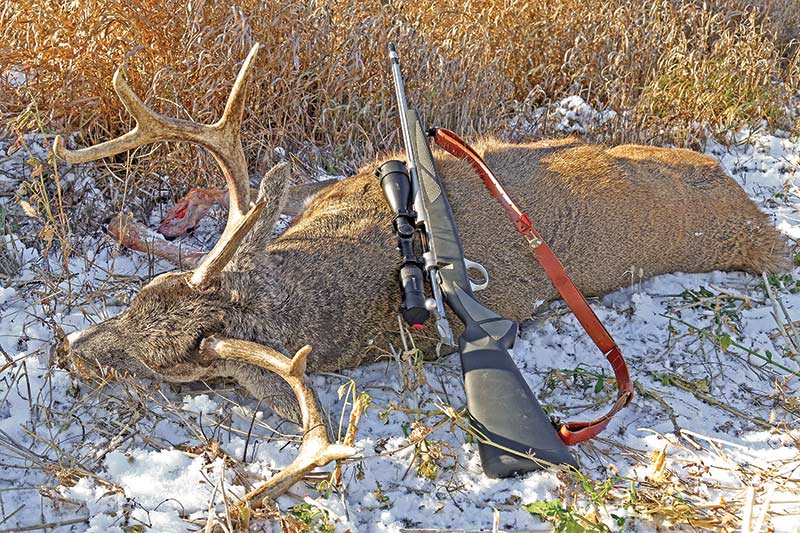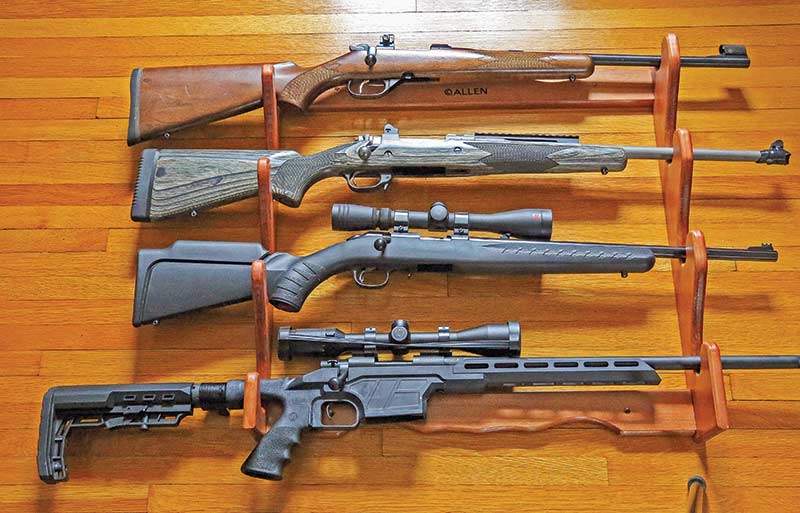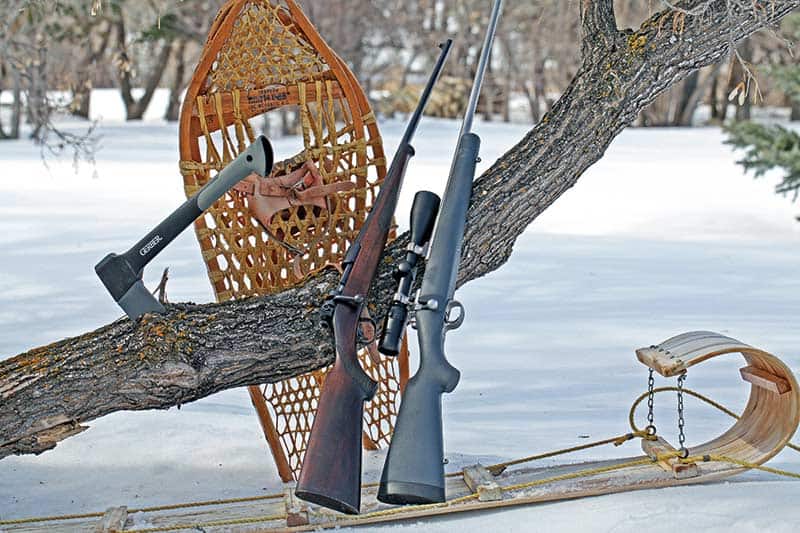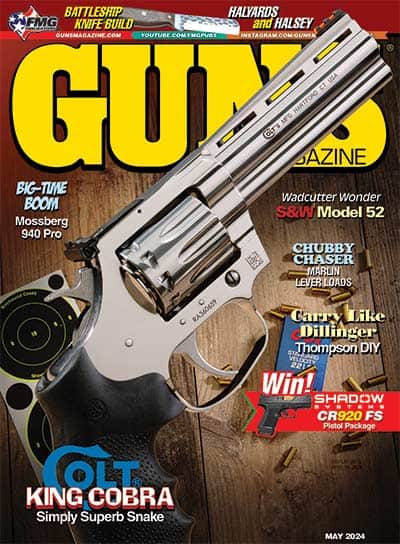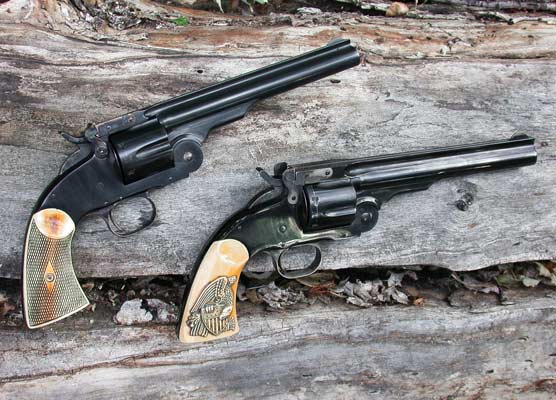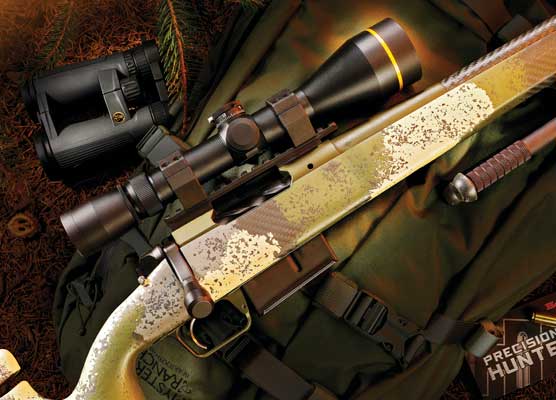Things Change
Are the ‘Good Old Days’ Now?
The argument can be made rifles haven’t changed much. If I were to show up for a deer hunt driving a Model T, my fellow hunters would think I must have lost a bet. But they would hardly notice if I uncased a nice custom-stocked Mauser 98 in 7×57, a 1903 Mannlicher-Schoenauer 6.5×54, a Winchester 1894 or Savage 1899, or a Springfield .30-’06.
Staying The Course
Things don’t change quickly in the rifle world. It’s not so much we riflemen won’t embrace change; we just need a lot of convincing. Old Faithful worked for Dad and Grandad and it will keep working for us. Some innovations are obviously superior, such as smokeless powder. It only took a decade or so for us to put away our black powder rifles — well, not too far away because we still take them out once in a while.
There have been other game-changing innovations such as optical sights, jacketed bullets, noncorrosive priming, and of course, stainless steel and synthetic stocks. Some other innovations were more subtle but as an old timer I can see their influence. These include things like laser rangefinders, inexpensive chronographs and electronic hearing protection. One could include optics with reliable, repeatable adjustments even though this is a topic in itself.
The Long Ranger
Longer range target shooting has an illustrious history. Good shooting was done at a thousand yards decades ago, even more than a century ago. But target shooters had a huge advantage — they shot on surveyed ranges knowing the exact range within a yard or two. Hunters in the field don’t have this luxury.
I know of quite a few hunters who claimed expertise in estimating range. Many are not too bad out to 300 yards or so, but much less skilled out where it matters. Out on the far end of the ballistic parabola when the bullet is falling fast, an error of even 25 yards can mean the difference between a clean kill and wounded game. In the game field, can you reliably eyeball 550 yards from 575 yards? Don’t feel bad, no one can.
When someone boasts of their skill at estimating range, tell them you’re going to compare their estimate with a rangefinder reading. They start backpedaling in short order — in Tom Wolfe’s useful phrase, “making imaginary snowballs with their hands.”
The way we dealt with longer range game shooting back in the day was to pursue increasingly flat-shooting cartridges. This required higher velocity, which in turn required bigger capacity cases, which required stronger and heavier actions and longer barrels, not to mention dealing with more recoil and shorter barrel life.
With laser rangefinders and inexpensive chronographs, we no longer have to guess at range or trust muzzle velocity claims. With accurate data, longer range shooting isn’t so difficult. How has this affected rifles? Trends I’ve noticed over the past couple of decades has been greater interest in accuracy, in medium capacity cartridges and less interest in ultra-high velocities. This in turn resulted in rifles being lighter, more compact, and with (usually) less recoil.
Take barrel length, for example. I have half a dozen rifles with 26″ barrels chambered for cartridges such as .220 Swift, .257 Weatherby, .264 Win. Mag., 7mm Remington Ultra and .338 Lapua. There are a bunch with 24” barrels. In the ’50s and ’60s, barrels for non-magnum cartridges settled at 22”. These barrels seem to me like the Little Bear’s porridge: not too hot, not too cold, just right. Medium works for me, always has, always will.
Short Stuff
The difference is I don’t hate short barrels as I once did. Back in the ’70s, for a couple of seasons I used a little Remington 600 .308 with an 18 ½” barrel. I liked the light weight and short overall length especially when still hunting in heavy brush and from the bench it was very accurate. But its muzzle-light balance made it hard to shoot accurately in the field. In those days I didn’t wear ear protection while hunting and the muzzle blast of the stubby barrel was appalling.
Today I have several rifles chambered to .308 and similar cartridges with barrel lengths from 16 ½” to 20”. What’s changed? Electronic muffs let me hear woods sounds like breaking branches or bucks snorting, while taming the rifle’s report to tolerable levels. Rifle makers have learned to make short, light rifles that still balance well. I’ve choreographed the load I’m shooting and have a ballistic table with bullet drop and scope come-up data taped to the stock.
If your deer rifle is still a 10-lb., 7mm or .300 Magnum you secretly hate to shoot because the noise rattles your brain, the recoil jars your glasses off and false teeth loose, I urge you to embrace change. Get a laser rangefinder, chronograph and electric muffs, or even pay the price and get a suppressor. Get a 7mm-08 Rem. or 6.5 CM weighing 7-lbs. all-up. You’ll shoot better and cheaper burning 45 grains of powder rather than 80.
Although, dang it, I’m still tempted to take out the old Marlin 1893 .38-55 with iron sights and hard-cast lead bullets — but with smokeless rather than black powder. See, I’m not afraid of change!

